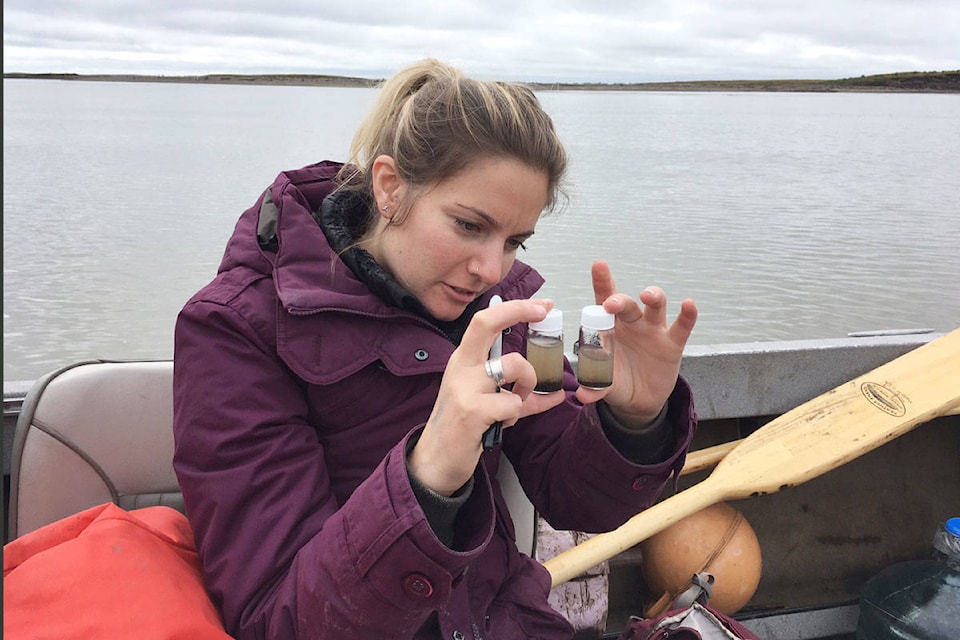When the Canada C3 ship docked in Prince Rupert — one of many stops during its 150-day voyage around the three coasts of Canada — Rhiannon Moore disembarked. As one of the researchers aboard the refurbished icebreaker, Moore had travelled from Tuktoyaktuk to Prince Rupert on Leg 12 of the trip to collect sediment samples to study.
Once on dryland, Moore presented some of her research on microplastics to a packed room. Her Oct. 2 talk, “Tiny plastics, big issues” was hosted by the Northern Coast Cetacean Research Institute’s popular marine speaker series.
Microplastics are defined as pieces of plastic that are five millimetres or smaller, and can come from cosmetics, clothing fibres shed in a washing machine, and bigger plastics that break in the ocean. Moore compares them to the size of a lentil or smaller.
After the talk, the master’s student, who also works as a research assistant for the Ocean Pollution Research Program at the Vancouver Aquarium, said that microplastics are only recently being studied by scientists. Microplastics aren’t easy to see, but they’re newly considered a contaminant.
“In terms of the ecosystem, the most obvious concern of plastics is that animals become entangled or ingest them, and they’re not a natural food. We’ve seen that animals like seabirds will eat larger pieces of plastic and it fills up their stomach, and then they starve,” Moore said.
“The more insidious thing is when they get to these tinier pieces,” she said, because microplastics will travel through the food chain. Once a small fish consumes microplastic and is eaten in turn, the microplastic may be passed on.
“We’re just at the start of learning what the potential health impacts might be for animals and also for humans,” Moore said.
“It can be a tough subject because there’s no denying that there’s plastic in the ocean. Plastic is something that is definitely there because of us. It’s a topic that everyone can connect with and people of all ages and backgrounds can relate to because we all use plastic.”
While scientists like Moore are trying to analyze the impact of microplastics, she always ends her talks with ways people can help prevent more plastic from winding up in the ocean.
“One of the easiest things is to reduce the amount of single-use plastics. I always say ‘No excuse for single use.’ Those are things you use once or twice and then throw away. Like the lid to a coffee cup: You have your coffee for 10 minutes and then you throw it away and it sits in the landfill for hundreds of years,” she said.
The researcher recommends starting at the grocery store by buying foods with less packaging, and by not using plastic bags to bring groceries home. Next, do a plastic inventory of your bathroom. Bar soaps, instead of liquids that come in plastic bottles, are a simple and cost-effective way to reduce your impact. Finally, Moore suggests wearing natural fibres like cotton, wool and hemp.
“There are so many easy solutions that people can try at home and in their daily life that make a big difference.”
RELATED: One lucky Rupertite to join Canada C3
keili.bartlett@thenorthernview.com
Like us on Facebook and follow us on Twitter
